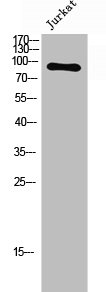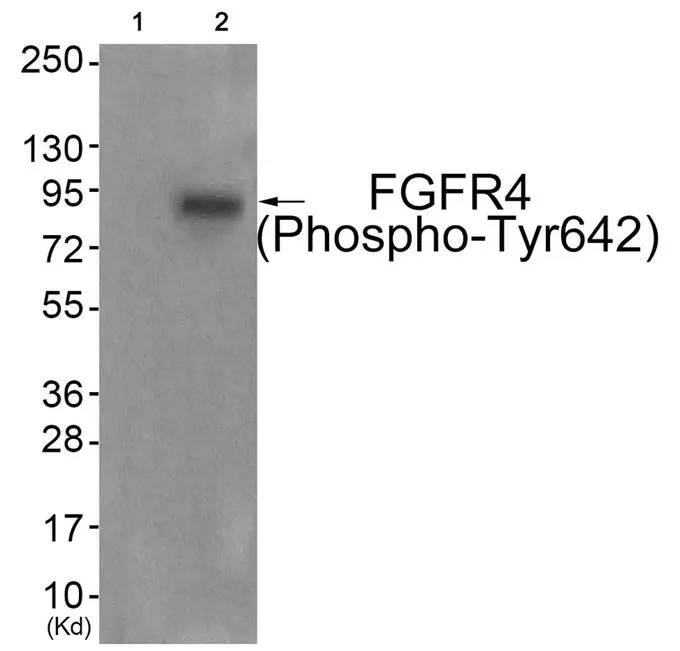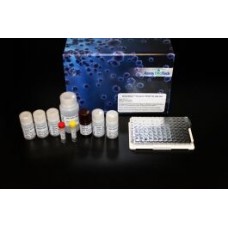![IHC-P analysis of human liver tissue using GTX83291 FGFR4 antibody [4H2B10B2]. IHC-P analysis of human liver tissue using GTX83291 FGFR4 antibody [4H2B10B2].](https://www.genetex.com/upload/website/prouct_img/normal/GTX83291/GTX83291_20170912_IHC-P_w_23061322_634.webp)
IHC-P analysis of human liver tissue using GTX83291 FGFR4 antibody [4H2B10B2].
FGFR4 antibody [4H2B10B2]
GTX83291
ApplicationsWestern Blot, ELISA, ImmunoHistoChemistry, ImmunoHistoChemistry Paraffin
Product group Antibodies
TargetFGFR4
Overview
- SupplierGeneTex
- Product NameFGFR4 antibody [4H2B10B2]
- Delivery Days Customer9
- Application Supplier NoteWB: 1/500 - 1/2000. IHC-P: 1/200 - 1/1000. ELISA: 1/10000. *Optimal dilutions/concentrations should be determined by the researcher.Not tested in other applications.
- ApplicationsWestern Blot, ELISA, ImmunoHistoChemistry, ImmunoHistoChemistry Paraffin
- CertificationResearch Use Only
- ClonalityMonoclonal
- Clone ID4H2B10B2
- ConjugateUnconjugated
- Gene ID2264
- Target nameFGFR4
- Target descriptionfibroblast growth factor receptor 4
- Target synonymsCD334, JTK2, TKF, fibroblast growth factor receptor 4, hydroxyaryl-protein kinase, protein-tyrosine kinase, tyrosine kinase related to fibroblast growth factor receptor, tyrosylprotein kinase
- HostMouse
- IsotypeIgG1
- Protein IDP22455
- Protein NameFibroblast growth factor receptor 4
- Scientific DescriptionThe protein encoded by this gene is a member of the fibroblast growth factor receptor family, where amino acid sequence is highly conserved between members and throughout evolution. FGFR family members differ from one another in their ligand affinities and tissue distribution. A full-length representative protein would consist of an extracellular region, composed of three immunoglobulin-like domains, a single hydrophobic membrane-spanning segment and a cytoplasmic tyrosine kinase domain. The extracellular portion of the protein interacts with fibroblast growth factors, setting in motion a cascade of downstream signals, ultimately influencing mitogenesis and differentiation. The genomic organization of this gene, compared to members 1-3, encompasses 18 exons rather than 19 or 20. Although alternative splicing has been observed, there is no evidence that the C-terminal half of the IgIII domain of this protein varies between three alternate forms, as indicated for members 1-3. This particular family member preferentially binds acidic fibroblast growth factor and, although its specific function is unknown, it is overexpressed in gynecological tumor samples, suggesting a role in breast and ovarian tumorigenesis. [provided by RefSeq, Jul 2008]
- Storage Instruction-20°C or -80°C,2°C to 8°C
- UNSPSC12352203

![WB analysis of HEK293T cells transfected with the pCMV6-ENTRY control (1) and pCMV6-ENTRY FGFR4 cDNA (2) using GTX83291 FGFR4 antibody [4H2B10B2]. WB analysis of HEK293T cells transfected with the pCMV6-ENTRY control (1) and pCMV6-ENTRY FGFR4 cDNA (2) using GTX83291 FGFR4 antibody [4H2B10B2].](https://www.genetex.com/upload/website/prouct_img/normal/GTX83291/GTX83291_20170912_WB_w_23061322_843.webp)


![ICC/IF analysis of methanol-fixed HEK293 cells trasfected with FGFR4-hIgGFc using GTX83129 FGFR4 antibody [7H1]. Green : FGFR4 Blue: DRAQ5 fluorescent DNA dye](https://www.genetex.com/upload/website/prouct_img/normal/GTX83129/GTX83129_20170912_ICCIF_w_23061322_561.webp)


